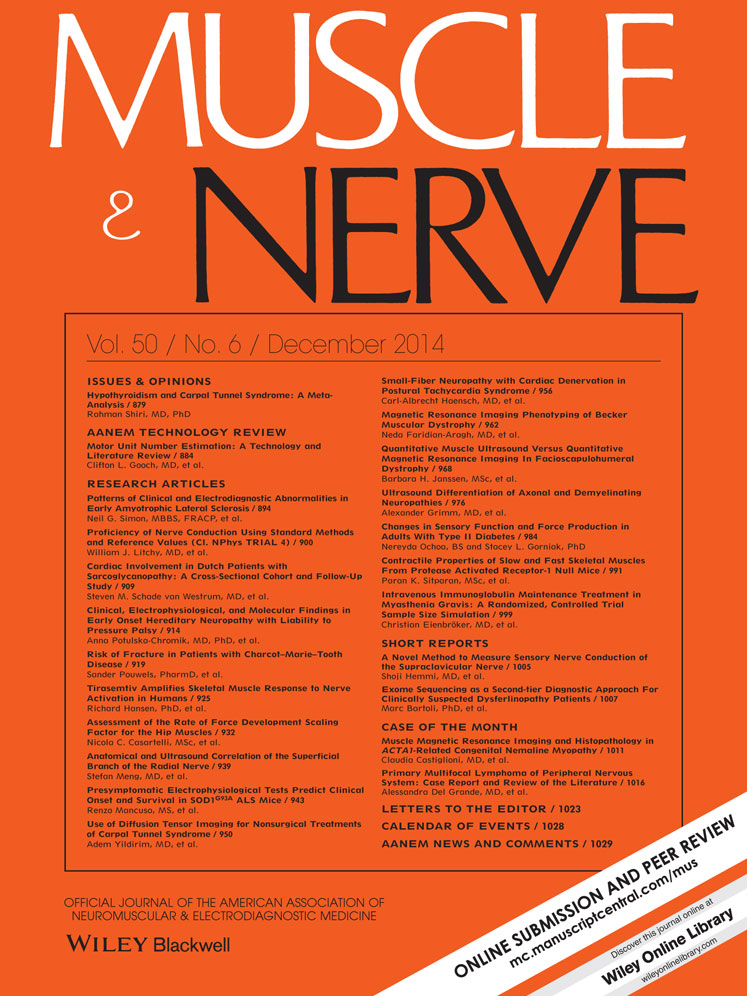Risk of fracture in patients with Charcot–Marie–Tooth disease
Disclosure: The Division of Pharmacoepidemiology and Clinical Pharmacology employs S.P., A.d.B., and F.d.V., and has received unrestricted funding from The Netherlands Organisation for Health Research and Development (ZonMW), the Dutch Health Care Insurance Board (CVZ), the Royal Dutch Pharmacists Association (KNMP), the private–public-funded Top Institute Pharma (www.tipharma.nl), which includes co-funding from universities, government, and industry; the EU Innovative Medicines Initiative (IMI); the EU 7th Framework Program (FP7); and the Dutch Ministry of Health and Industry (including GlaxoSmithKline, Pfizer, and others). H.G.M.L. is a researcher at the WHO Collaborating Centre for Pharmaceutical Policy & Regulation, which receives no direct funding or donations from private parties, including the pharmaceutical industry. Research funding from public–private partnerships, including IMI, Top Institute Pharma, is accepted under the condition that no company-specific product or company-related study is conducted. The Centre has received unrestricted research funding from public sources, including the ZonMW, the CVZ, EU FP7, the Dutch Medicines Evaluation Board, and the Dutch Ministry of Health. C.C. and W.E.J.W. report no disclosures.
This work was funded in part by the European Calcified Tissue Society, and the NIHR, Biomedical Research Unit in Musculoskeletal Sciences, Nuffield Orthopaedic Centre, Oxford, UK.
ABSTRACT
Introduction: In this study we evaluated fracture risk in patients with Charcot–Marie–Tooth (CMT) disease. Methods: We conducted a retrospective cohort study using the UK Clinical Practice Research Datalink (1987–2012). Each patient with CMT disease was matched with up to 6 patients without a history of CMT disease. The outcome measure was fractures. Results: The risk of non-osteoporotic fracture was statistically significantly increased [adjusted hazard ratio (AHR) 1.47, 95% confidence interval (CI) 1.01–2.14], whereas risk of any and osteoporotic fracture did not reach statistical significance compared with control patients [AHR 1.31 (95% CI 0.98–1.74) and AHR 1.10 (95% CI 0.69–1.74), respectively]. Conclusions: CMT patients have a 1.5-fold increased risk for non-osteoporotic fracture. Studies with larger numbers of CMT patients and with additional data on CMT subtype, bone mineral density, and functional status should be performed to confirm a true association between CMT and an increased risk of fracture. Muscle Nerve 50: 919–924, 2014




